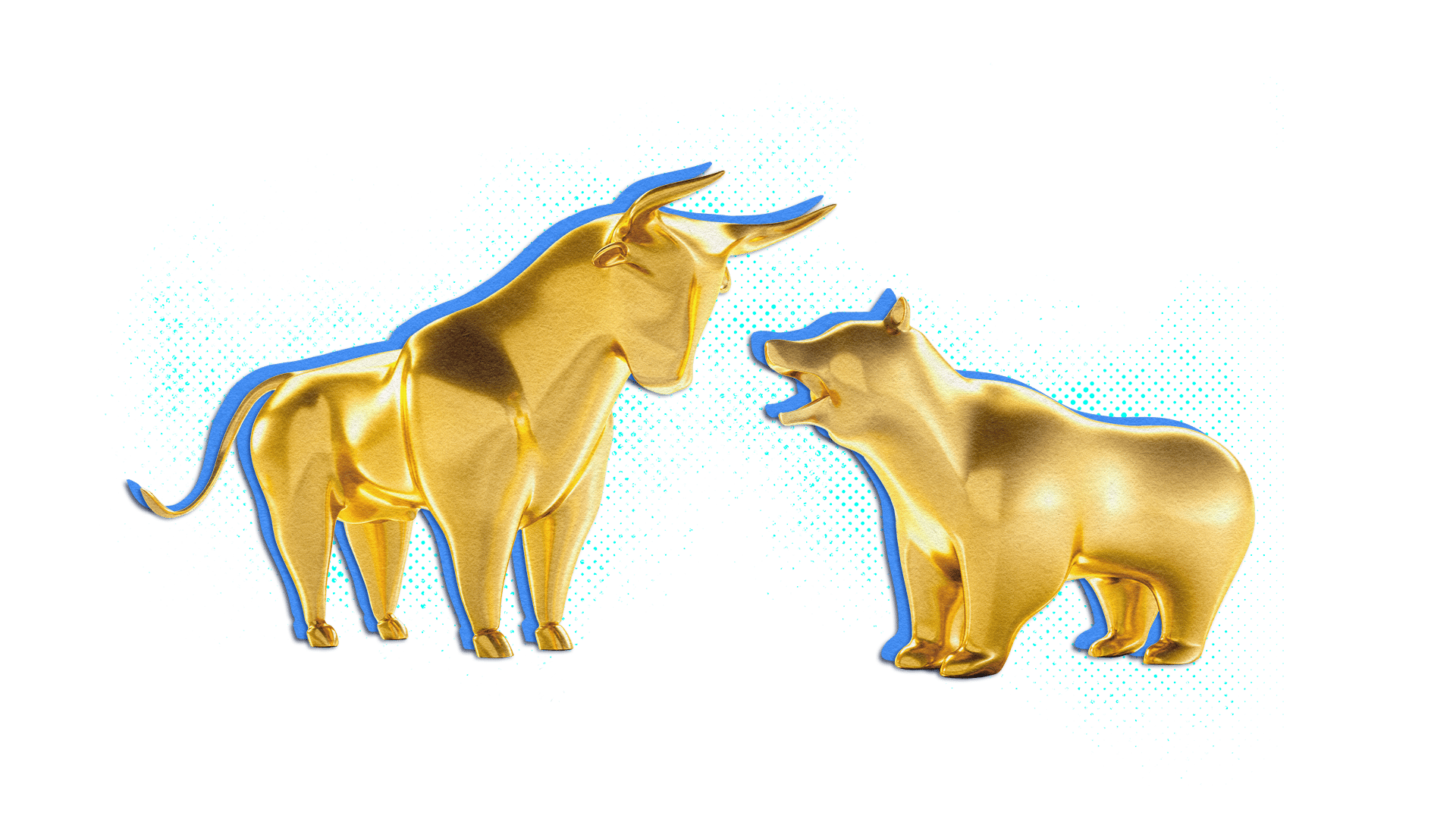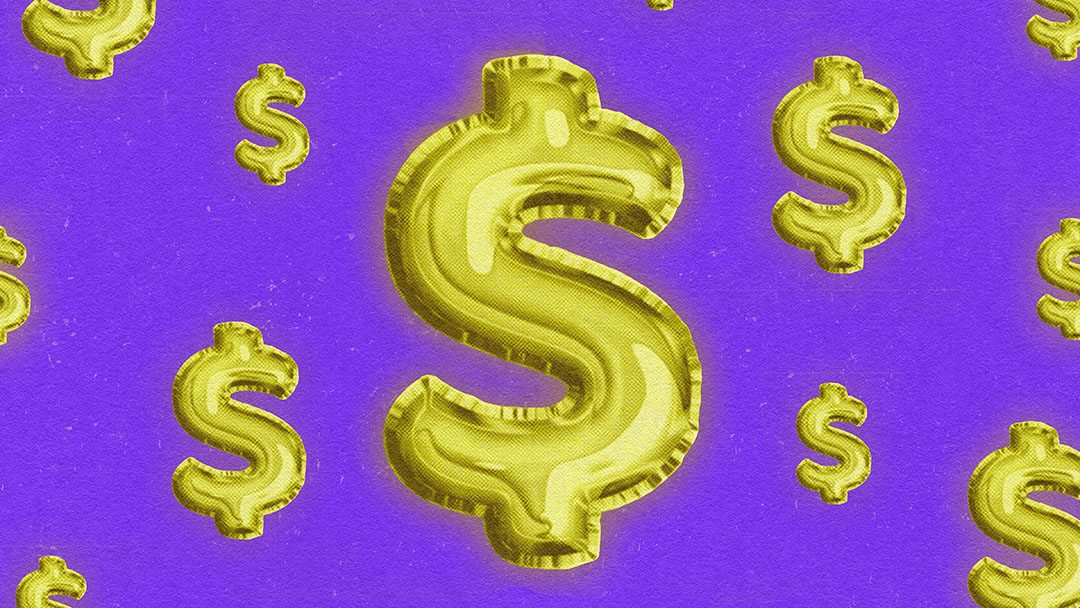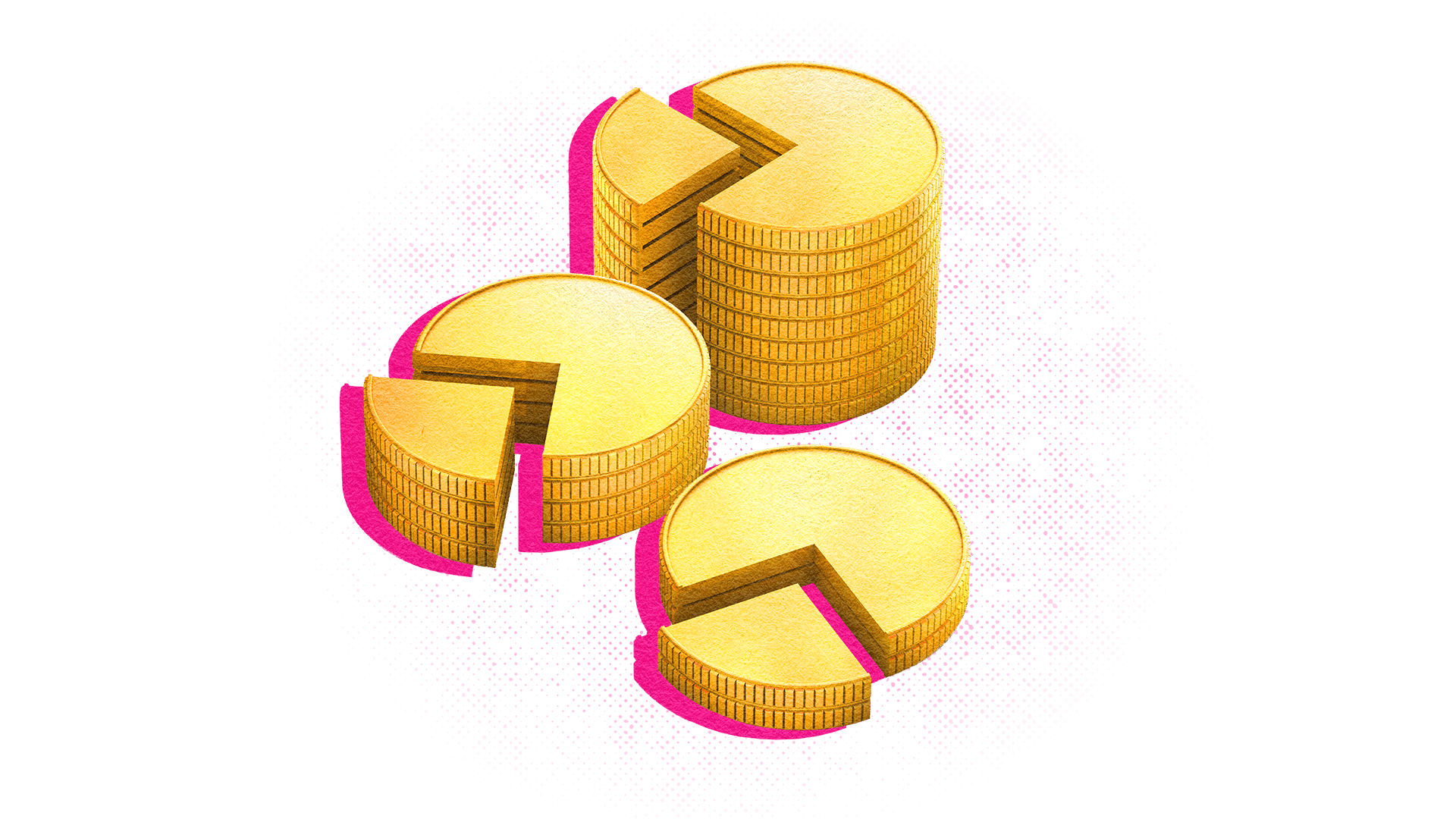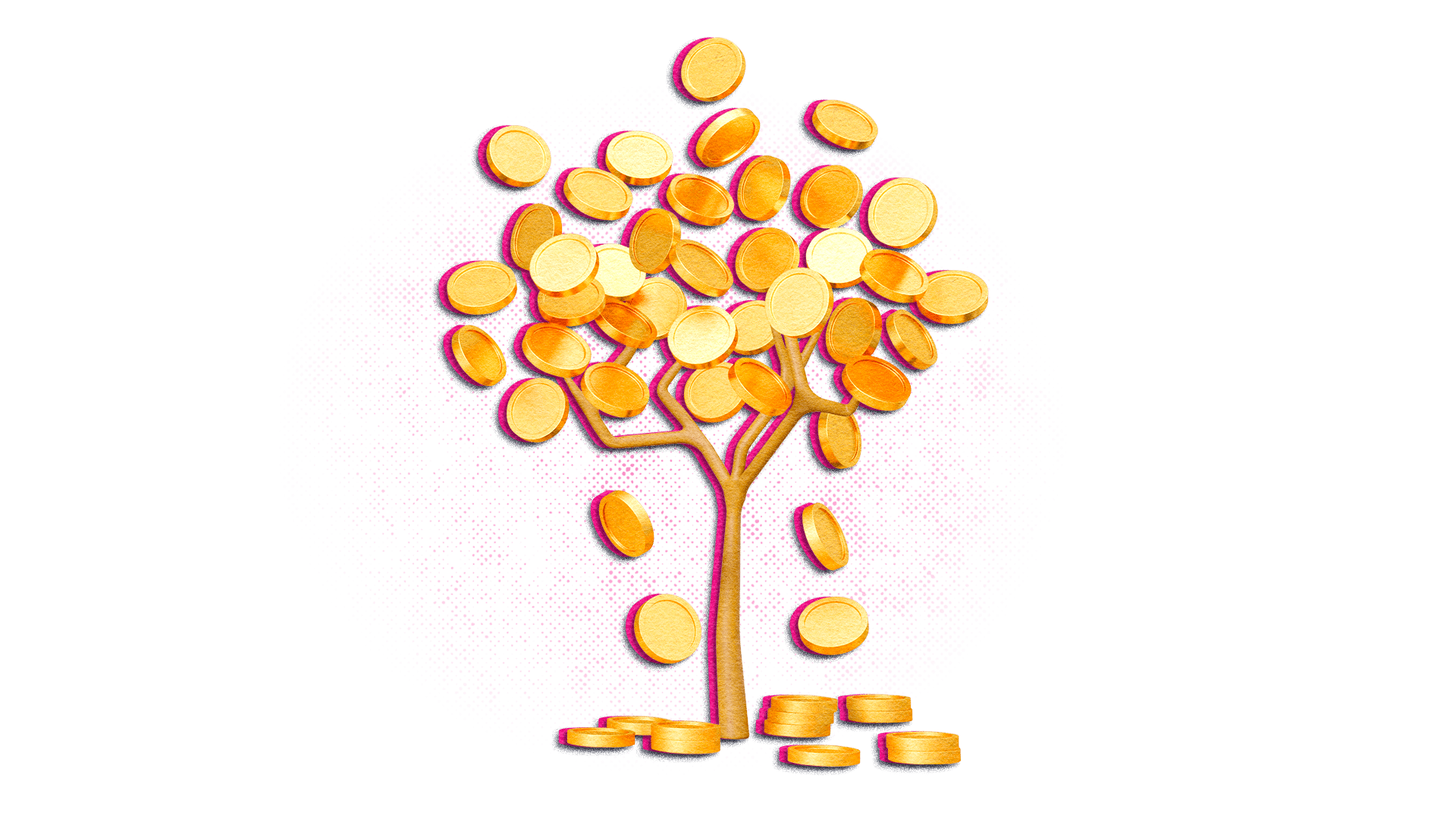- What is inflation?
- What causes inflation?
- Inflation vs., deflation, stagflation and hyperinflation
- How is inflation calculated?
- Interest rates vs. inflation rates
- Canada inflation rate history
- How does inflation affect investment?
- Advantages and disadvantages of inflation
- The bottom line
- Protecting your wealth during inflation
- Inflation: Frequently asked questions
No one likes to hear the word inflation, even though it’s a normal part of the economic cycle. Year over year, the prices on the goods and services we buy rise, making everything from groceries to gas more expensive. Price increases typically happen slowly. Often, we barely notice. In 2022, the rapid price increases that Canadians have experienced have been hard to miss.
Most households have felt the sting of inflation in the grocery store, where meat, produce and dairy prices have dramatically increased their food bills. It’s also affecting borrowing costs as rising interest rates introduced to combat inflation have made mortgages, loans and lines of credit more expensive.
High inflation and rising rates may make many investors nervous too. Widespread investor concern is one reason market volatility increased in 2022. But it’s not all doom and gloom: Those who are able to put money away for a rainy day can benefit from higher interest rates on their savings, and certain sectors and asset classes are now starting to offer more attractive returns.
For better or worse, inflation can have a significant impact on our economic lives. That’s why it needs to be understood. Here’s what you should know about inflation and some ways investors can attempt to manage its effect on their portfolios:
What is inflation?
Inflation is the broad and persistent rise of prices for goods and services, which lowers purchasing power for consumers and businesses.
High and unpredictable inflation can harm the economy, especially if incomes don’t increase at the same rate and growth slows.
The Bank of Canada (BoC) aims to keep inflation at about 2% per year, which is the middle of its targeted range of 1%–3%. The central bank’s objective is to give Canadians confidence in the value of their money by keeping inflation low, stable and predictable.
The BoC will adjust its policy interest rate up and down to keep inflation within its target range. The higher inflation goes, the more the BoC may raise its policy rate, something we saw happen in 2022. By raising rates, the BoC can make borrowing more expensive for the average Canadian, encouraging saving instead. This, in turn, slows the demand for goods, which, as we’ll explain, can cause inflation gains to normalize.
Related: U.S. inflation cools but data provides mixed bag for markets
What causes inflation?
Inflation can be caused by many different factors. The rising price of raw materials needed to make goods or enable labour is a common cause of inflation. A surge in demand (or a sudden drop in supply) for goods such as fuel can also trigger inflation. Economists generally point to three main types of inflation: demand-pull inflation, cost-push inflation and built-in inflation.
- Demand-pull inflation: As the name suggests, demand-pull inflation happens when broader demand for goods and services exceeds supply, pushing inflation higher. An example occurred during the economic recovery coming out of the first few months of the COVID-19 pandemic. With lockdowns lifted, demand for goods and services climbed, depleting the overall supply of food, fuel and other items.
- Cost-push inflation: Cost-push inflation happens when the supply of goods or services is limited, but demand remains steady, pushing prices higher. We saw this with oil and fertilizer following the beginning of the Russia-Ukraine conflict in early 2022.
- Built-in inflation: Built-in inflation is what happens when higher costs become normalized. Built-in inflation is a catalyst for either demand-pull inflation or cost-push inflation. For example, when inflation drives up the cost of living, it forces employers to raise workers’ salaries or wages, and organizations to raise the prices of their products or services to remain profitable. Because of this circular dependency, built-in inflation is also known as the wage-price spiral.
Related: The Politics of inflation and how it could impact the utilities sector
Inflation vs. deflation, stagflation and hyperinflation
Other terms we often hear about when talking about inflation include deflation, stagflation and hyperinflation, so let’s get more clarity on each of these:
- Deflation: The opposite of inflation is deflation. This occurs when consistent declines in pricing for goods and services have a negative impact on the economy. It generally happens with a pullback in the supply of money and credit. One major sustained period of deflation in Canada happened in the 1930s during the Great Depression. A dramatic drop in spending led to a drop in prices of more than 20% over four years.
- Stagflation: This refers to the combination of high inflation, high unemployment and slow economic growth. It was last seen in developed economies during the 1970s as a result of monetary and fiscal policies, as well as an oil embargo. Stagflation can be a dangerous economic situation because prices are rising when fewer people have jobs, which can slow the economy down further.
- Hyperinflation: Hyperinflation can happen when prices of essential goods like food or fuel surge very quickly. While it’s rare in developed countries like Canada, it has happened in Hungary, Greece, and Germany. When an economy experiences hyperinflation, the value of its currency quickly erodes.
Related: Is the Bank of Canada close to the end of its rate-hiking cycle?
How is inflation calculated?
There are different measures of inflation, including the Consumer Price Index, the Wholesale Price Index and the Producer Price Index. Let’s take a look at each of them:
- Consumer Price Index (CPI): The CPI is the most commonly referenced measure of inflation. It includes a basket of goods and services consumers typically buy, such as food, housing, clothing and transportation. If a basket of goods measured by the CPI costs $100 in one year and the same goods cost $103 a year later, the average annual inflation rate is calculated at 3%. The Bank of Canada also keeps a close eye on something called “core inflation,” which is the change in the price of goods and services, excluding more volatile segments such as food and energy. Core CPI enables economists to focus on underlying inflation trends.
- Wholesale Price Index (WPI): The WPI measures and tracks changes in the price of wholesale goods before they reach the retail level. WPI will vary from one country to another.
- Purchasing Price Index (PPI): Unlike CPI, which measures price changes at the consumer level, PPI measures the price pressures on those selling or producing the goods. PPI is a combination of indexes that measures the average change in selling prices faced by domestic producers of intermediate goods and services over time.
Related: Lumber costs keep whipsawing. What can investors learn from that?
Interest rates vs. inflation rates
How does inflation affect interest rates? As an investor, you’ll often hear the terms interest rates and inflation uttered in the same sentence. While the two are linked, they are two very different things. The inflation rate refers to the percentage at which consumer costs have risen or fallen over a set period of time. Interest rates generally refer to the Bank of Canada’s policy rate or the overnight rate, which is the interest rate the central bank charges financial institutions when they borrow money. Because banks pass those costs on to consumers, borrowing costs for average Canadians tend to rise when the overnight rate climbs.
It’s also the primary tool the BoC has at its disposal to control inflation. By making borrowing more expensive, the central bank can influence the pace of consumer and business spending. The bank may lower rates to try and encourage economic growth and raise rates to cool market activity in an effort to tame inflation.
Canada’s inflation rate history
Inflation rates in Canada can be volatile at times. While the Bank of Canada tries to keep inflation contained between 1%–3%, there have been occasional periods where inflation accelerated — or even slowed — outside of that range. At the start of the 1990s, inflation was above 4% before it settled into the BoC’s target range. During recessions, it’s not uncommon to see inflation plunge as it did in the mid-90s, in 2009 during The Great Recession or, most recently, at the outset of the COVID-19 pandemic in 2020. Typically, these hot and cold inflationary periods are short-lived, although their duration depends on the underlying economic factors fueling them.
Related: Can the Bank of Canada avoid policy pitfalls from the past?
How does inflation affect investment?
Inflation is generally bad for consumers, but it can be favourable for investors who put their money into assets that benefit from rising prices. Here are some examples:
- Commodities like oil, gold and fertilizer have tended to increase in price during inflationary periods, as investors turn to tangible assets expected to rise in value. However, this is not always the case, and investors should consider other macroeconomic and microeconomic factors before buying into or adding to investments in this sector.
- Real estate has occasionally been a good investment in an inflationary environment, but investors should understand there are different types of real estate, including office, residential, commercial and industrial, and results will vary. For instance, while home prices often drop due to rising interest rates, real estate investments — such as Real Estate Investment Trusts (REITs) — that operate rental units may do better if more people stick with renting instead of buying. Real estate is also a popular store of value for long-term investors, including those who can generate rental income.
- Bonds can be complicated to evaluate in an inflationary environment. This is because the price of an existing bond can vary as interest rates rise and fall. In a rising rate (i.e. inflationary) economy, the price of existing bonds can fall because the interest paid may lag inflation. However, newly issued bonds may pay a higher interest rate in order to compensate lenders for the impact of inflation. Bottom line? An investor who holds bonds as inflation rises may see losses, even as a buyer of newly issued bonds may benefit from higher yields.
- Stocks have historically been a mixed bag when it comes to inflation. Growth stocks, such as technology companies, and high-dividend paying stocks often become less attractive when you can get similar returns in more stable fixed income securities. Some investors may focus on companies that can pass on higher costs to consumers. For example, companies that sell consumer staples, such as groceries, household essentials and pet supplies.
Advantages and disadvantages of inflation
Inflation is often seen as a negative economic event, but there can be benefits for savers and investors.
Advantages of inflation
- Can raise the value of assets
- Can influence consumer and business spending when it spurs wage growth and investment
Disadvantages of inflation
- Can erode the real value of investments
- Increases costs on businesses and consumers
- May not affect every part of an economy the same way, which can distort wages, prices and investment returns
The bottom line
Savers may be able to take advantage of higher interest rates to sock away funds earmarked for near-term expenses, such as a new car, a down payment on a home or an emergency fund. There are also opportunities for investors looking to build and maintain wealth in a high-inflation environment if they choose the right investments. While no investments are guaranteed, there are certain sectors and assets that often do better than others in a high interest rate world.
Protecting your wealth during inflation
It can sometimes feel stressful to make investment decisions during periods of high inflation. Here are some things you might consider to help protect your portfolio when inflation is high:
- Re-evaluate your budget
- Review your asset allocation within your portfolio to manage risk
- Maintain a diversified portfolio
- Hold quality investments over the long term
- Avoid making emotional decisions when market conditions change
![]()
Frequently asked questions about inflation
Is it good to invest during inflation?
Investing during inflation is neither good nor bad. Attempts to time the market are risky, since you don’t know when stocks will climb again. One way to save for the future is to consistently invest. However, you may want to consider what you’re investing in during these periods. That doesn’t mean you need to sell out of or avoid sectors that are not seen as favourable, but you may want to direct new cash toward sectors that stand to perform better during inflationary times.
Which investments do best during inflation?
Investors will be able to find opportunities in every asset class when inflation is rising, but there are some sectors that historically have performed better during these periods. Commodities and real estate are two sectors that have performed well at times in the past. Companies that sell consumer staples, such as groceries, household essentials and pet supplies can also benefit from inflation. It’s important to remember, however, you still need to do your due diligence before making any investment decisions.
Do investments go up during inflation?
Yes and no. While inflation can be a headwind, it’s not the only factor that can influence the value of an investment. There may be investments from just about every asset class that may rise in an inflationary environment.
What are the three main causes of inflation?
Increasing consumer demand and rising input costs are two of the main causes of inflation. Built-in inflation is another cause that can be triggered by either rising demand or higher input costs. As inflation drives up the cost of living, employers may be forced to raise wages while businesses, in turn, may increase prices to protect their margins.
What are the three measures of inflation?
There are three main figures economists look to when measuring inflation: the Consumer Price Index (CPI), the Wholesale Price Index (WPI) and the Purchasing Price Index (PPI). Each index measures a different part of the economy to give economists a better idea of what is causing prices to rise.
How long can inflation last?
Inflation typically is a normal and healthy part of a functioning economy. The Bank of Canada’s mission is to maintain inflation between 1% and 3%. High or persistent inflation is what concerns economists as it can last for years or even decades, in some cases.








